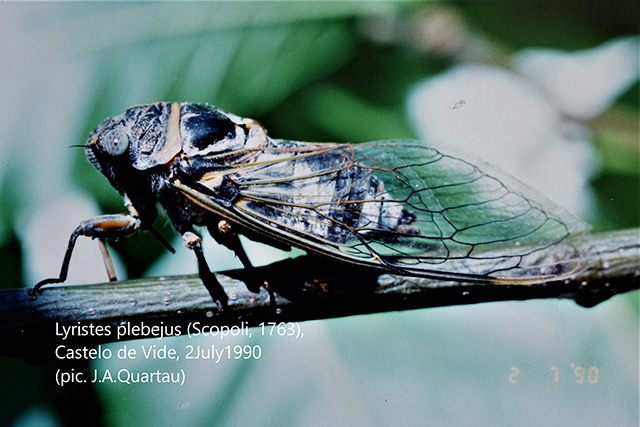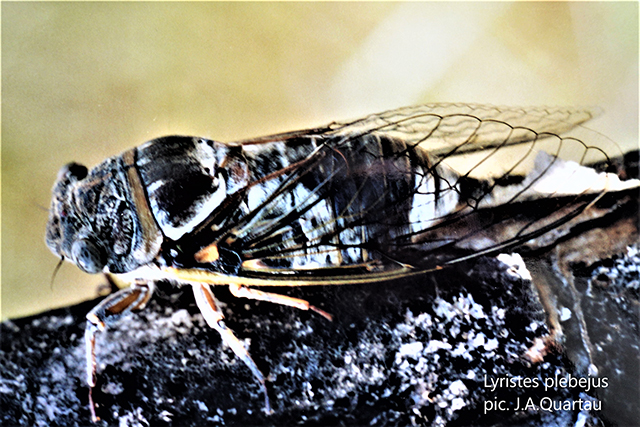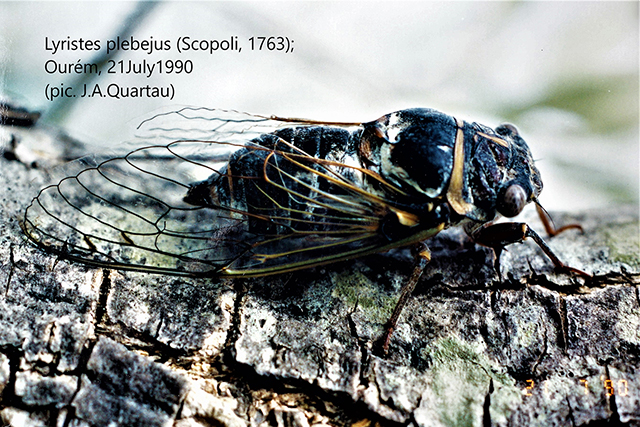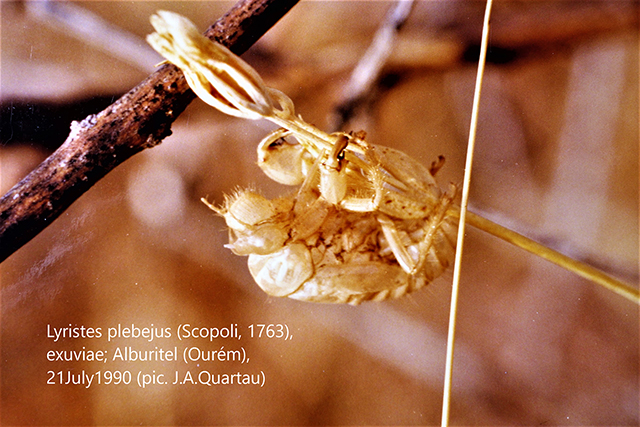This is the largest cicada to be found in Portugal,
where for years it was abundant in various biotopes of the central area of the country, but which is quite rare nowadays as a result of
inappropriate agricultural practices with abusive use of pesticides, and
herbicides.
Distribution - Captured by the author or cited for the Baixo Alentejo (Serra do
Mendro), Alto Alentejo (Castelo de Vide, Marvão, Portalegre), Extremadura
(Monte da Caparica, Serra da Arrábida), Ribatejo (Soure, Tomar) and Beira Litoral
(Alburitel, Leiria, Vila Nova de Ourém, Serra de Aire).
Ecology -In open woods, olive groves and "garrigue", usually pousada in
trees such as the olive tree (Olea europeae), the pine tree (Pinus pinaster) and the
holm oak (Quercus rotundifolia), being in the past frequent, for example,
in maize (Zea mays) and vineyards (Vitis vinifera).
Notes - Males emit acoustic signals from June to the end of August.
which consist of a continuous series of long sentences distinctly
modulated in amplitude. Each sentence includes an initial increase of
rapid in signal amplitude, which then becomes more or less constant
and which at some point shows a slow and progressive decrease in the
intensity. In the examples studied, the sentence varied between 12 and 13 sec.
an initial phase of 1-2 sec.
This is a
charismatic cicada, because in addition to being the largest that occurs in Portugal, Spain and
in Europe is the one that produces the most intense timbalization. Beyond the
signal is produced by the tymbals, this cicada still produces secondary modulation
through the movement of the abdomen that opens and closes the opening
that gives access to the cavity beneath the opercles.
|

Photo 1: Lyristes plebejus (Scopoli, 1763), Castelo de Vide, 2July1990 (pic. J.A. Quartau).
Use the cursor as MAGNIFYING GLASS on the image

Photo 2. Lyristes plebejus (Scopoli, 1763), Serra de Aire, 16July2006 (pic. J.A.Quartau).
Use the cursor as MAGNIFYING GLASS on the image

Photo 3. Lyristes plebejus (Scopoli, 1763), Ourém, 21July1990 (pic. J.A.Quartau).
Use the cursor as MAGNIFYING GLASS on the image

Photo 4. Lyristes plebejus (Scopoli, 1763), exuviae, Alburitel (Ourém), 21July1990 (pic. J.A.Quartau).
Use the cursor as MAGNIFYING GLASS on the image

Photo 5. Depicts specimens collected by the author in the area of Ourém during the sixties and seventies, where now the species is very rare. (foto JAQuartau).
Use the cursor as MAGNIFYING GLASS on the image











